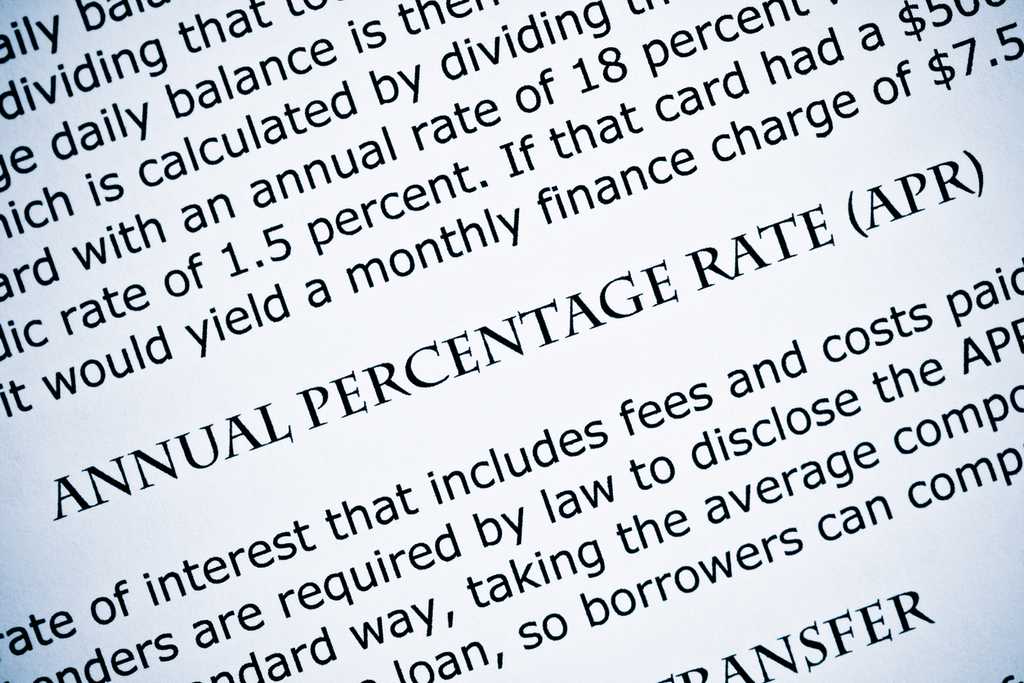As strange as it may sound, loans may have more than one kind of interest rate. One interest rate may be a monthly rate. Another frequently advertised rate is the annual percentage rate, or APR.
What is APR, and why is it more important than interest rate?
What Is APR?
APR is the presentation of the effective annual interest rate on a loan that reflects both the interest rate and certain fees required to acquire the loan. Because it adds some fees to the interest rate of the loan, it is a representation of the “cost of funds,” which is the total cost to borrow money.
Disclosure of APR is required by all lenders pursuant to the Truth In Lending Act (“TILA”), which was passed in 1968. The purpose of TILA was to require lenders to use a uniform standard reflecting accurate finance charges. The regulation makes it easier for consumers to evaluate the actual cost of loans from different lenders.
For example, one lender may charge higher loan fees upfront than another. Even though both lenders have the same interest rate, the real cost of the first lender’s loan will be higher due to the higher fees and charges.
The regulation was intended to eliminate deceptive advertising by lenders. Prior to its passage, it was possible for a lender to advertise a below market interest rate without disclosing that they charged above market lender fees for the loan.
How Does APR Work?
First, APR does not apply with all types of financing. If no lender fees are charged or no variable terms apply, the stated interest rate and the APR can be the same. But if lender fees or variable terms are involved, the APR will be higher than the stated interest rate.
One notable example of APR applies to mortgages. There are certain fees normally charged by mortgage lenders. These include origination points, private mortgage insurance (PMI) and application fees. APR reflects the net effect of those fees on the rate you’ll pay over the life of the loan.
For example, let’s say you apply for a $200,000 mortgage. The lender may charge fees equal to 1.5% of the loan amount, or $3,000.
When the fees are subtracted from the loan amount, the net amount of proceeds you’ll receive is $197,000. Even though you’ve received reduced proceeds, you’ll still be required to repay the full $200,000.
APR will calculate the effective interest rate based on the loan amount reduced by lender fees. For that reason, APR is usually higher than the quoted interest rate on the loan.
In addition, APR spreads the cost of upfront loan fees over the life of the loan. Even though those fees are paid at the time the loan is taken, APR is designed to reflect the higher rate throughout the loan term.
The APR presentation makes it easier for consumers to determine the true financing cost of a loan, rather than simply relying on the published interest rate.
How to Calculate APR
Though it is possible to calculate APR manually, it will be provided for you by the lender, as required under federal law. While the stated interest rate – which is referred to as the nominal interest rate – is important, consumers must focus primarily on APR. That’s the only way to know exactly how much a loan or credit line will really cost.
The specific APR calculation will vary based on the loan type, terms and specific fees charged. For example, some loans have fixed rates, while others have variable rates. And each industry and lender charges its own set of fees.
But the general APR calculation (for credit cards) looks like this:
If you prefer not to do the APR calculation manually – and who can blame you – you can take advantage of online APR calculators. One popular example for mortgages is the Bankrate Mortgage APR Calculator. You simply need to input basic information, including the loan amount, nominal interest rate, loan term, and loan fees, then hit “Calculate.”
NOTE: As we’ll see in the next section, there are different types of APRs, and you will need to use the appropriate APR calculator for each type to get an accurate number.
What Are the Different Types of APRs?
One of the complications with APR is that there are different calculation methods based on each loan type, as well as specific provisions of each loan. That’s why we recommend using an APR calculator specific to each loan type to get the job done.
Different types of APRs include the following:
Fixed-rate APR
This is the easiest APR to calculate since the nominal interest rate doesn’t change throughout the term. You simply need to reduce the loan amount by lender fees, then calculate the APR based on applying the nominal interest rate to the net loan amount.
Variable rate APR
This APR version is more challenging because the interest rate is a moving target. With a variable rate mortgage, the APR may be calculated based on the initial interest rate of the loan, and subsequent changes.
Since those rate changes are subject to interest rate caps, the disclosure may present additional APRs after the first rate change based on the maximum rate that can be charged on the loan.
Credit Card APR
This APR is even more complicated than a variable rate APR, because the interest rate can change any time there’s a change in the lender’s prime rate. That means the rate charged won’t be fixed for specific time periods. You may pay one rate for six months, another for 15 months, a third for 11 months, and so on.
In addition, the balance owed on a credit card will change over the life of the obligation. For that reason, credit card APRs are not as reliable as those for mortgages, car loans, and other fixed-rate obligations.
There are other factors that can affect a credit card APR:
- Introductory APR - A credit card may offer a fixed interest rate – or no interest at all – for the first 12 to18 months for either new purchases or balance transfers. Once that term expires, you’ll revert to the variable rate arrangement. The introductory APR can also be affected by fees, such as the commonly charged balance transfer fee. Typically ranging between 3% and 5% of the amount transferred, it will have a major impact on the APR.
- Cash advance APR - Since credit cards commonly charge a higher rate for cash advances, the APR on your credit card will be higher after taking one. And much like balance transfers, lenders can charge a cash advance fee. If you take a cash advance on a credit card that already contains a balance of previous charges, the APR will reflect a blend of the cash advance APR and the regular APR.
- Penalty APR - Credit cards have certain contingent fees. These usually apply if you miss a payment. The lender will not only charge you a late fee, but you may also be subject to a higher interest rate. Both will increase the APR on your credit card.
APR vs. APY
APY, which stands for Annual Percentage Yield, is sometimes confused with APR, the two are completely different. APR applies to loans, while APY is used in connection with interest-bearing investments. These include savings accounts, money markets and certificates of deposit (CDs).
What APY does specifically is reflect the effect of compound interest on a savings instrument.
With most savings instruments, interest will compound. At a minimum, it will compound annually. But it will more likely compound on a monthly, daily, or even continuous basis.
Compound interest simply means you’ll be earning interest on interest you’ve already received. That means the APY will always be higher than the base interest rate for the savings instrument.
For example, a CD paying an interest rate of 5% may have an APY of 5.15%. The additional 0.15% interest earned will reflect interest compounded on the accumulated interest in the CD. The bank will disclose the applicable APY for each savings instrument.
How to Get a Lower APR on a Credit Card
Like all loans, credit card APR will be based largely on your credit score. The higher your score, the lower the APR, and vice versa.
This is doubly important because credit card lenders commonly check your credit score periodically. If your credit score increases, the bank may lower your APR. But if the score decreases, the APR may be raised. It’s even possible your credit line will be frozen if your credit score falls below a certain threshold.
To get a lower APR, use the following strategies regularly:
Pay all bills on time. That includes bills for utilities, cell phones, and cable and Internet services. While they don’t report your on-time payments to the credit bureaus, they will report collections and charge-offs.
Monitor your credit on a regular basis. Not only will this give you an opportunity to track your credit score, but you can also dispute negative information that’s reported in error.
Use credit responsibly. Be careful not to exceed credit limits. Avoid applying for new financing more than once or twice each year. And be sure to keep your credit utilization ratio well under control. Credit bureaus like a ratio below 30%. To the degree you exceed that percentage, your credit score will fall. If the percentage gets up around 80% or more, your credit score may fall into the “fair” category, even if all payments have been made on time.

